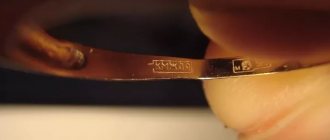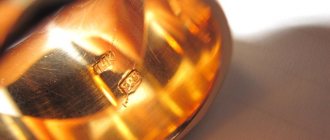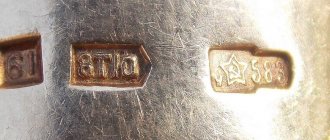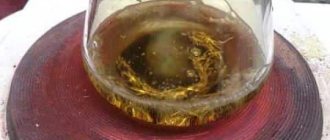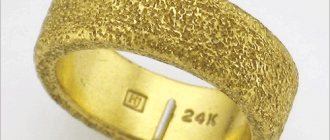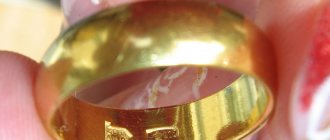How is native gold born?
It is generally accepted that all chemical elements were originally present in the protoplanetary cloud.
From it formed: a metal core in the center of the planet and various minerals around it. And although this is only a model, a hypothesis, it prevails as fundamental. Many metals from the subsurface, through plumes (convection currents in the mantle) and volcanism, ended up in surface ore deposits or deposits.
And what a word: deposit! Or: native gold. Those. for some reason, in the Russian language, the process of formation of some metals occurs through their birth in the earth, and not through transfer and loss from somewhere.
Maybe this is true, especially when you look at the examples below:
Gold in a quartz vein. It can be seen that quartz crystals grew in this conglomerate. But like in a sandwich, there is gold between them. And also in a peculiar form, not like a frozen melt.
]]>
I included an article ]]> with a version about the hollow structure of planets and stars. This is also a hypothesis, although it overturns many of our ideas about the world.
]]>
]]>
]]>
]]>
Here you can see that the gold vein grew like an ice pattern on the glass - similar to the branch of a plant, a fern.
I immediately remembered the testimonies of miners and the beliefs of geology that such “branches” and “leaves” in layers of coal are supposedly 100% evidence that coal is of biological origin. That these are coked deposits of ancient flora.
I have written repeatedly that coals contain as much sulfur as there is in no tree or grass. Sulfur concentration is not comparable to biological life. Hard and brown coal are of abiogenic origin. These are petrified oil seeps after disasters. And the branches of supposedly ferns are how graphite and carbon grow under certain conditions.
]]>
]]>
Let's return to gold. This pattern of gold vein growth, simulating a plant branch, is crystal growth and can occur either from a melt or from a solution. I am a supporter of the second version. The same explanation applies to the formation of silicon dioxide crystals in granite - from a superheated solution (broth) under pressure or when some parameters change.
The frosty pattern on the window also does not just grow - you need a certain temperature on the glass and the presence of humidity in the air. I think it's the same with gold. Quartz grains and a gold “branch” begin to grow in the broth when the physical characteristics of the broth change.
]]>
]]>
Geologically, gold is most often found in hydrothermal quartz veins. Those. quartz can be said to have grown from solutions of hydrothermal vents. Probably everything - and gold too.
And alluvial gold in sand and soil is already a product of the destruction of such conglomerates, when streams of water erosion destroyed and washed away this rock.
Gold can crystallize, grow from solution and into the following forms:
]]>
]]>
On the left it shares a common structure with quartz crystals. On the right are individual crystalline forms.
]]>
]]>
Crystalline gold grown by chemical transport. Those. The growth of gold can be recreated in the laboratory.
]]>
]]>
Other precious metals of the platinum group grow in the same way:
]]>
]]>
Crystalline platinum
]]>
]]>
Palladium crystals
The conclusion is this: on Earth, during geotectonic catastrophes (worldwide extinctions of flora and fauna according to geochronology), processes occurred that led to the emergence of new deposits of various metals and minerals. I think this is not a gradual process, but is associated with rapid catastrophic phenomena in the lithosphere. But what led to such destabilization of the subsoil?
The most famous gold nugget, or why it is not considered such
Bernard Halterman with his nugget
Many consider the largest gold nugget to be the Holtermann Nugget, with a total weight of up to 290 kg and a length of 1.4 m. The actual weight of gold in it was 93-95 kg. It was discovered by gold miner, businessman, politician and photographer Bernard Halterman on October 19, 1872 in southeastern Australia.
Gold in quartz
However, from a technical point of view, this block cannot be considered a nugget. After all, a nugget is pure metal in large form. The Holtermann plate, in turn, consisted of large pieces of gold held together by quartz. Such a block is called a vein, where pieces of gold are tightly combined with pieces of quartz. Since Holterman was a professional photographer, and at that time this was a rarity, he and his team took a series of photographs, which we can now see in all articles on this topic.
Cleaning and transporting the “Welcome Stranger” nugget
Drawing of the Desired Stranger, published in The Illustrated Australian News for Home Reader, 1869
Deason and Oates discussed the discovery excitedly but pragmatically. The nugget had to be safely transported before anyone found out about it. They waited until sunset and, under the cover of darkness, dug up the gold and took it to Deason's house, where they placed it in the fire to burn the dirt and break up the black quartz that covered the gold.
The nugget was fired all weekend, and on Monday morning it was estimated that almost 32 kg of black quartz had broken off from the main nugget. This quartz was then taken to a local crushing machine and, after further crushing, almost 1.7 kg of gold was recovered. The gold nugget itself was delivered on a cart under Mrs. Deason's skirt to the town of Dunolly, which was 15 km away.
The largest gold nugget in the world: basic figures
John Tully, president of the Dunolly History and Arts Society, holds a replica of the 72kg Desired Stranger. Photo: Darren Howe
At Dunolly, Deason and Oates took the nugget straight to the bank. They wanted to get rid of him quickly before they could be robbed. Unfortunately, the “Welcome Stranger” nugget was too large to weigh entirely on the bank scale. So he had to be dragged to a local blacksmith, where he was broken into three parts. They sold 66 kg of gold to the bank, and Deason and Oates kept the rest for themselves. You can find different data on the actual weight of the nugget, but the most commonly cited figure is 72 kg.
Where can you find noble metal in nature?
Gold (Au), although a fairly rare metal, is found everywhere. For example, precious ore in stone can be found in both rocks and sea sand. Most of these deposits are divided into two main types:
- indigenous;
- placer.
Primary deposits
Indigenous deposits are those in which gold-bearing minerals are formed in places where the earth's crust breaks. Magma erupts to the surface, cools and forms rocks. In such rocks, the precious metal is practically never found in its pure form.
As a rule, particles of precious metal are present in salt solutions, which, when solidified, form fossilized rocks. Therefore, natural gold alloys in primary deposits contain elements such as:
- copper;
- platinum;
- silver.
Sulfides of this metal and other types of oxides obtained at high temperatures in the bowels of the earth are quite common.
Modern industry knows rocks containing up to several hundred different impurities. Only a mine in which the mass fraction of gold is at least 1 gram per ton (for primary deposits) is considered suitable for development.
Alluvial
Placer deposits are also called secondary deposits. This is due to the fact that gold placers are formed as a result of rock erosion. Under the influence of rain, groundwater, snow melting, wind and other factors, the rock is destroyed. Water flows move smaller particles to new places.
More often, placers are found in the beds of mountain rivers. The larger the broken rock fragments, the higher along the riverbed they settle. Stones containing precious metal are usually found closer to the source. Smaller and lighter particles flow further with the flow of water, settling at the bottom of mountain lakes.
When developing alluvial deposits, the mass fraction of gold in the ore should not be lower than 0.5 grams per cubic meter.
In total, three types of placers can be distinguished:
- Alluvial. After the stone is broken, gold particles are carried by river waters.
- Eluvial. Ore, not washed away by water flows, is found in watershed areas.
- Deluvial. Rock formations that have been eroded. Aurum occurs in the upper layers of mountain slopes, as well as along the coastlines of lakes and seas.
Geography of the gold rush
Geography of the gold rush in Australia
Have you ever wondered what prompted people to set off on long voyages to the poorly developed continent of Australia? Why did Australia begin to develop so actively and why are all the major cities on this continent located in the southwest?
Nugget “Welcome Stranger”: the story of the discovery
A copy of The Desired Stranger
In February 1869, two British gold miners, John Deason and Richard Oates, were excavating in central Victoria when their pick struck something very hard near the surface of the earth.
According to another story, they were trying to pull a stuck cart wheel out of a hole. When Deason bent down to examine a large rock that he thought was interfering with his search, he discovered a nugget. It became the largest find of pure gold that people have ever seen and will ever see in the future. The nugget was 60 cm long and almost 30 cm wide.
External signs of gold content in quartz:
- Porosity (presence of small holes - pores) in quartz. The porosity of the rock suggests that the quartz contained ore minerals, which may be associated with gold, but were leached out.
- Chilling (coloring of quartz yellow or red). In ocher quartz there is a process of decomposition of sulfides, so gold may also be present here.
- The presence of visible gold (the presence of gold grains, nests and veins). To test quartz for gold content, a quartz pile is split into pieces and moistened with water.
- Ore color. Pure matte white or glassy translucent quartz is rarely gold-bearing. If the mineral has a bluish or grayish tint in some places, this may be a sign of the presence of sulfides. And sulfides are one of the most important components of gold-sulfide-quartz ores.
Mining gold from stone involves a completed technological process of extracting the precious metal from the ore of primary deposits. The development of placers involves the use of the material flotation method with subsequent purification from impurities. Ore and placer gold sometimes forms nuggets.

